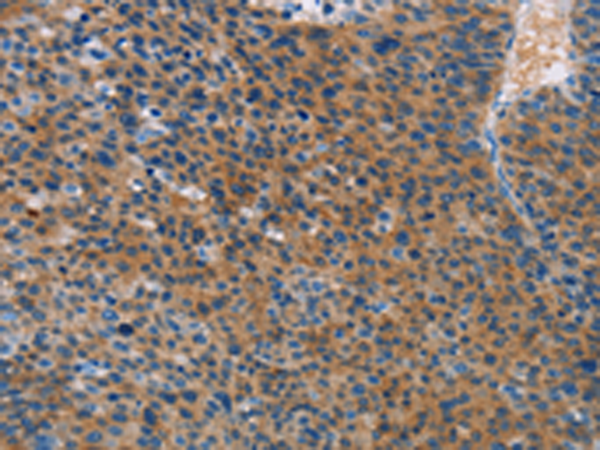
| WB | 咨询技术 | Human,Mouse,Rat |
| IF | 咨询技术 | Human,Mouse,Rat |
| IHC | 1/15-1/50 | Human,Mouse,Rat |
| ICC | 技术咨询 | Human,Mouse,Rat |
| FCM | 咨询技术 | Human,Mouse,Rat |
| Elisa | 1/1000-1/2000 | Human,Mouse,Rat |
| Aliases | AMSH |
| Host/Isotype | Rabbit IgG |
| Antibody Type | Primary antibody |
| Storage | Store at 4°C short term. Aliquot and store at -20°C long term. Avoid freeze/thaw cycles. |
| Species Reactivity | Human, Mouse, Rat |
| Immunogen | Fusion protein of human STAMBP |
| Formulation | Purified antibody in PBS with 0.05% sodium azide and 50% glycerol. |
+ +
以下是关于STAMBP抗体的3篇参考文献及其摘要内容:
---
1. **文献名称**:*STAMBP regulates cortical development by modulating endosomal trafficking*
**作者**:Shen, Y. et al.
**摘要**:该研究通过STAMBP抗体发现STAMBP蛋白在神经祖细胞的内体分选中起关键作用,调控Notch信号通路,影响小鼠大脑皮层发育。STAMBP缺失导致微头畸形和神经元迁移缺陷。
---
2. **文献名称**:*Mutations in STAMBP cause a microcephaly-capillary malformation syndrome*
**作者**:Carter, C.S. et al.
**摘要**:通过全外显子测序和STAMBP抗体验证,发现STAMBP基因突变导致溶酶体功能异常,与微头畸形-毛细血管畸形综合征相关,揭示了其在蛋白质降解中的关键作用。
---
3. **文献名称**:*STAMBP interacts with the ESCRT machinery to regulate EGFR degradation and cell survival*
**作者**:Kim, J. et al.
**摘要**:利用STAMBP抗体进行免疫沉淀实验,证明STAMBP通过结合ESCRT复合体调控表皮生长因子受体(EGFR)的内体分选和溶酶体降解,影响癌细胞增殖和凋亡。
---
这些文献覆盖了STAMBP在神经发育、遗传疾病及癌症中的分子机制研究,抗体应用包括功能验证和蛋白互作分析。如需具体DOI或期刊信息可进一步补充。
The STAMBP (Signal Transducing Adaptor Molecule Binding Protein) antibody is a tool used to detect and study the STAMBP protein, a deubiquitinating enzyme involved in intracellular signaling and protein trafficking. STAMBP, also known as AMSH (Associated Molecule with the SH3 Domain of STAM), plays a critical role in the endosomal sorting pathway by cleaving ubiquitin from ubiquitinated proteins, influencing receptor recycling or degradation via multivesicular bodies (MVBs). This protein interacts with STAM1/2 adaptors, linking it to growth factor and cytokine signaling pathways, including EGFR and interferon responses.
STAMBP antibodies are essential in research to investigate its expression, localization, and function in cellular processes. Dysregulation of STAMBP is linked to neurological disorders, particularly microcephaly-capillary malformation syndrome (MIC-CAP), caused by STAMBP mutations. Studies also explore its role in cancer, immune regulation, and neurodegenerative diseases like Alzheimer’s, where defective protein sorting may contribute to pathology. By enabling techniques like Western blot, immunohistochemistry, and immunofluorescence, these antibodies help elucidate STAMBP’s molecular mechanisms and potential as a therapeutic target.
×